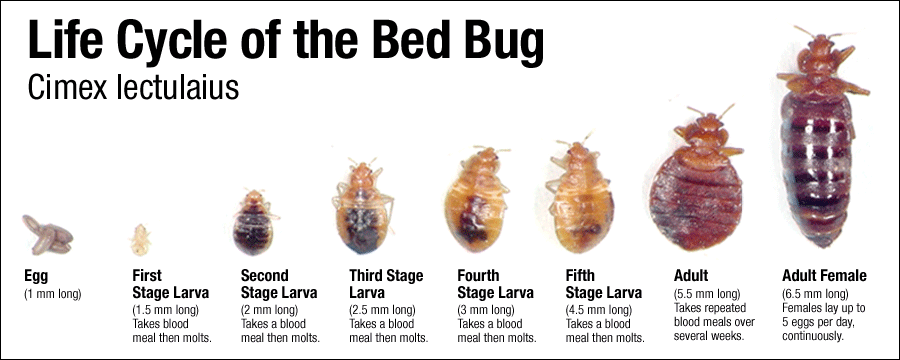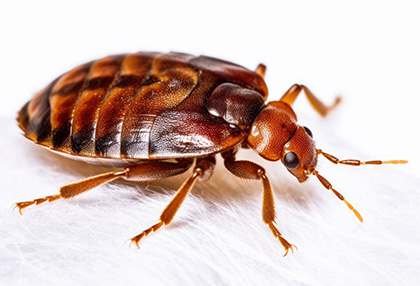How to Identify Bed Bug Bites and Prevent Future Infestations
Check Out the Various Kinds Of Bug and Their Treatment Choices for Effective Administration
The monitoring of bugs in both agricultural and property setups demands a comprehensive understanding of the different kinds that can get into these environments, along with the treatment alternatives available for effective control. From family rats that present health risks to garden insects that intimidate plant returns, each group demands a customized approach. Recognizing the subtleties of insect habits and the matching treatments is critical; nevertheless, the concern remains: what are one of the most effective approaches that not just attend to existing infestations yet also stop future events?

Typical House Pests
Although home pests can vary considerably in kind and behavior, many share common attributes that make them an annoyance. Usual family bugs include rodents such as rats and mice, pests like cockroaches and ants, and periodic intruders such as spiders and flies. These parasites often flourish in settings that supply easy access to water, sanctuary, and food, making homes specifically prone.
Rodents, as an example, are well-known for causing architectural damages and spreading condition. They can munch with electrical wires, potentially leading to fire threats. Bugs like cockroaches are not only disturbing yet can likewise trigger allergic reactions and asthma in sensitive people. Ants, while commonly safe, can get into kitchen areas, providing food sources unappealing.
Effective bug monitoring starts with avoidance, which includes securing access factors, keeping sanitation, and utilizing appropriate storage space approaches for food. Recognizing the routines and features of these usual home pests is necessary for reliable administration and preserving a healthy and balanced living environment.
Yard Bugs and Their Effect
Garden insects pose a significant risk to the health and wellness and performance of plants, with some price quotes recommending that they can trigger up to 40% of crop losses in specific regions. These parasites, that include pests such as aphids, beetles, and caterpillars, as well as nematodes, can bring upon serious damages by feeding upon plant cells, leading to stunted growth, reduced yields, and compromised top quality.
The influence of garden bugs prolongs beyond plain visual worries; they can disrupt ecological communities by changing food web, impacting pollinators, and spreading out illness among plants. Parasites like the spider mite can weaken plants, making them extra vulnerable to fungal infections. Invasive species might outcompete indigenous flora, leading to biodiversity loss.
Integrated Pest Administration (IPM) methods, which integrate biological control, cultural practices, and targeted chemical applications, can provide sustainable solutions. By comprehending the specific pests and their behaviors, garden enthusiasts can apply targeted therapies that not just shield their plants however likewise promote a much healthier garden community.
Rodents: Recognition and Threats
Rats are typical garden pests that can pose considerable dangers to plant health and overall ecological community security. These tiny animals, including varieties such as rats, voles, and mice, are typically determined by their sharp incisor teeth and durable bodies. Their fur pigmentation varies widely, varying from gray to brown, and they commonly display a long tail which help in balance and dexterity.
The dangers related to rodent infestations are complex. First of all, they can create considerable damage to plants and gardens by gnawing on stems, origins, and fruits, which can result in substantial financial loss for gardeners and farmers. Rodents are infamous for their role as vectors of different diseases, including hantavirus and leptospirosis, which can be transferred to people and family pets (bed bug heat treatment). Their droppings and pee can contaminate dirt and water sources, intensifying health pest control for roaches dangers.
In addition, rats can disrupt the all-natural balance of local ecosystems by taking on native wild animals for sources. Their burrowing habits can result in soil erosion and destabilization of plant roots. Early recognition and understanding of rodent actions and dangers are vital for reliable parasite monitoring.
Efficient Treatment Approaches
When managing rodent problems, using efficient therapy approaches is essential for minimizing damages and health and wellness threats. A multi-faceted approach commonly produces the finest outcomes. Catches are a crucial element of rodent control. Break catches and digital catches supply a humane and quick way to eliminate rats, while glue catches can aid check activity degrees.
Second of all, lure terminals including rodenticides can be strategically placed in areas of high rodent activity. These stations must be tamper-resistant to make certain the safety and security of non-target pets and youngsters. It is important to choose the proper lure type, as rodents can establish bait hostility if not changed regularly.
In enhancement to catches and bait, sealing access points can considerably lower the opportunities of re-infestation. This includes examining and repairing voids in home windows, doors, and wall surfaces.
Finally, expert insect control solutions can be advantageous for extensive problems. They possess the proficiency, devices, and products necessary for reliable elimination and can establish a customized administration plan. By applying these treatment methods, home owners can successfully address rodent concerns and secure their health and home.
Preventative Steps and Tips

Keeping sanitation is similarly important; guarantee that food is stored in impermeable containers and promptly clean up crumbs or spills. Consistently disposing of waste and making sure that compost stacks are managed effectively can prevent insects from being brought in to your home.
Furthermore, take into consideration landscape design practices that prevent rodent habitation. Trim back plant life and keep mulch away from the structure of your home, as these can provide hiding spots for insects.
Conclusion
Reliable bug management requires a detailed understanding of different pest types and their specific therapy choices. Eventually, a proactive stance on parasite monitoring promotes a much healthier atmosphere, securing both agricultural and domestic areas from pest-related challenges.
Common family pests include rodents such as rats and computer mice, bugs like roaches and ants, and periodic invaders such as spiders and flies.Rodents are usual garden pests that can position considerable risks to plant health and general environment stability. Very early recognition and understanding of rodent habits and threats are essential for effective bug administration.
Efficient pest monitoring begins long prior to an invasion occurs, with positive actions that can substantially reduce the chance of spider removal rodent entry and habitation.Efficient insect monitoring demands a thorough understanding of various bug types and their specific therapy options.